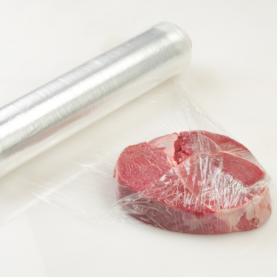The global spread of food
Curiosity, a craving for new flavours and the lure of the exotic soon led to the exchange of foodstuffs between countries and continents. From Antiquity to the present day, successive eras have brought their share of new products and have enriched culinary choices. Over the centuries, trade networks were established to facilitate distribution and they continue to expand today.
Discovering other tastes
Early in history, various factors, such as a fascination with other places, curiosity, a quest for new flavours and tastes, as well as commercial appeal and territorial conquests, led to cultural exchange between countries and continents.
Antiquity was the first major period in which distribution took off. Spices had already arrived in the Mediterranean region from the Orient as early as the 2nd millennium BCE, and trade increased with Greek and Roman civilisations. In the 1st century BCE, Rome had access to fruit, vegetables, cereals and spices from all over the Empire and regions further afield, such as Asia.
Despite the geopolitical upheavals connected to the end of the Roman Empire, trading with the Orient continued. The expansion of the Arab Empire from the 7th century, extending from the Indus to Spain, increased the movement and cultivation of new plants, such as lemon trees and rice, which arrived on European soil through Spain. Between the 11th and 13th centuries, when Crusaders went to the Middle East to rescue Christians, they discovered new flavours which they brought back with them.
The Renaissance was a defining period in cultural and commercial exchange. Europeans particularly appreciated spices so, in order to buy them as cheaply as possible, they looked for new trade routes to India and China. The conquest of the oceans and the discovery of America would change eating habits. Foodstuffs unknown until then began to be widely distributed, although not all of them were embraced straight away, such as tomatoes and potatoes for example, which some cultures viewed with suspicion for a long time before accepting them. Other products, such as coffee, tea and chocolate, appeared deliciously exotic to the Europeans and were warmly welcomed.
From 1870, progress in modes of transportation and preserving techniques meant that food, especially exotic fruit, could be distributed quickly. Bananas, pineapples, oranges, lemons and mandarines arrived from North Africa, the Middle East and America too. Today, we have access to a wide variety of exotic fruit, and kiwis and mangoes have become part of our everyday life.
Trading, which began among the first civilisations some 4000 years ago, has now become global. Our appetite for anything new and exotic is greater than ever. Consumers have never before had access to such a wide variety of food.
Distribution channels
Genuine trading networks were set up in Antiquity to assist the distribution of new products. The Romans had created a close-knit network of communication channels between their various provinces. At the same time, the famous ‘Silk Road’ allowed precious materials to be brought from China to the Middle East, to then be redistributed in the Mediterranean region. This major route passed through Central Asia and the often dangerous and difficult journey could last months. It was gradually abandoned around the 15th century in favour of the sea route, and ports in the Persian Gulf or the Red Sea became increasingly popular.
In addition, exploration of the oceans during the Renaissance opened up new trade routes across the world. With the setting up of trading posts and European colonies in Asia, America and Africa, foodstuffs moved from one continent to another and became widely established. With time, they spread more quickly, heralding today’s globalisation of the food trade.
Boudan, Christian, 2004. Géopolitique du goût. Paris : Presses Universitaires de France
Boulnois, Luce, 2010. La route de la soie. Genève : Éditions Olizane.
Guyot, Lucien, 1972. Les épices. Paris : Presses Universitaires de France
Poulain Jean-Pierre, 2002. Sociologies de l’alimentation. Paris : Presses Universitaires de France
Rosenberger, Bernard, 1996. La cuisine arabe et son apport à la cuisine européenne. In : Jean-Louis Flandrin, 1996. Histoire de l’alimentation. pp. 345 - 366. Paris : Fayard.
Flandrin, Jean-Louis, 1996. Les temps modernes. In : Jean-Louis Flandrin, 1996. Histoire de l’alimentation. pp. 549 - 576. Paris : Fayard.






